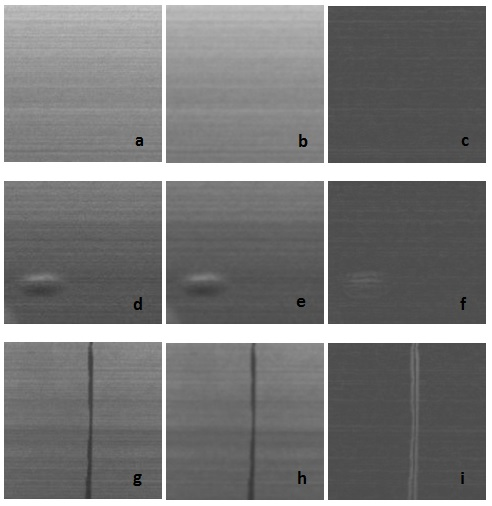Why Use AI in Metal Surface Defect Detection?
Metal surfaces are integral to industries such as automotive, metal and steel, aerospace, construction, and manufacturing, where product quality is paramount. Defects on metal surfaces—such as scratches, cracks, dents, discolorations, and coating inconsistencies—can compromise performance, safety, and aesthetics. Traditional methods of detecting these defects, such as manual inspections or basic machine vision systems, often fall short in terms of speed, consistency, and accuracy.
Artificial Intelligence (AI) has emerged as a transformative solution for wide and large metal surface defect detection, offering unparalleled precision, efficiency, and adaptability. This article explores the advantages of using AI for metal surface inspection and how it revolutionizes quality control processes.
Challenges in Metal Surface Defect Detection
Detecting defects on metal surfaces presents several unique challenges:
Reflective and Textured Surfaces:
Metals often have reflective surfaces that cause glare, making it difficult to detect subtle defects.
Textured or patterned surfaces can further complicate defect identification.
Micron-Level Defects:
Small defects, such as micro-cracks or pinholes, require extremely high-resolution imaging and sophisticated detection algorithms.
High Production Speeds:
In modern manufacturing, inspection systems must keep up with fast-moving production lines without compromising accuracy.
Variety of Materials and Processes:
Different metals (steel, aluminum, copper) and finishing processes (polishing, coating, anodizing) require adaptable inspection systems.
Manual Inspection Limitations:
Human inspectors are prone to fatigue and inconsistency, especially when inspecting high volumes or fine defects.
Advantages of Using AI for Metal Surface Detection
AI-powered defect detection software overcomes these challenges by leveraging advanced algorithms, machine learning, and real-time processing capabilities. Here’s why AI is the ideal solution for metal surface defect detection:
1. Enhanced Defect Detection Accuracy
AI algorithms excel at identifying even the smallest defects on complex surfaces. By analyzing large datasets of defect examples, AI models learn to distinguish between acceptable variations (e.g., texture or design patterns) and actual defects.
Micron-Level Detection:
AI detects micro-defects that are often missed by traditional methods, such as scratches, cracks, and coating inconsistencies.
High Precision:
AI can identify subtle anomalies in texture, color, or shape, ensuring that no defect goes unnoticed.
2. Real-Time Inspection for High-Speed Production
AI systems process images and video streams in real-time, making them suitable for fast-moving production lines. This ensures defects are detected and flagged without slowing down manufacturing operations.
Instant Feedback:
Real-time processing allows manufacturers to take immediate corrective actions, reducing waste and rework.
Scalable Performance:
AI systems maintain high accuracy even at high speeds, ensuring consistent inspection results.
3. Adaptability to Different Materials and Processes
AI-powered systems are highly versatile and can be trained to inspect a wide range of metal types, finishes, and defect categories.
Material Agnostic:
Whether it’s steel, aluminum, or copper, AI adapts to the unique properties of each material.
Customizable Models:
AI algorithms can be fine-tuned for specific defects, such as corrosion in steel or discoloration in anodized aluminum.
4. Superior Handling of Reflective Surfaces
AI systems, combined with optimized imaging and lighting setups, handle glare and reflections more effectively than traditional methods.
Contrast Enhancement:
AI enhances image contrast, making defects on shiny or polished metal surfaces more visible.
Lighting Adaptability:
Paired with multi-angle or diffuse lighting systems, AI ensures accurate defect detection on reflective surfaces.
5. Consistency and Reliability
Unlike human inspectors, AI-powered systems deliver consistent results without fatigue or variability.
Eliminates Subjectivity:
AI provides objective assessments, ensuring uniform quality standards across production lines.
24/7 Operation:
AI systems can operate continuously, making them ideal for high-volume manufacturing.
6. Advanced Analytics and Reporting
AI not only detects defects but also provides actionable insights to improve processes and reduce defects in the future.
Defect Classification:
AI categorizes defects by type, size, and location, helping manufacturers prioritize corrective actions.
Process Optimization:
Analytics data enables manufacturers to identify root causes of defects, such as machine misalignments or material inconsistencies.
Applications of AI in Metal Surface Inspection
AI-powered metal surface detection systems are used across a wide range of industries and applications, including:
Automotive:
Inspecting car body panels, engine components, and wheels for scratches, dents, and coating inconsistencies.
Aerospace:
Detecting cracks, corrosion, and surface irregularities on turbine blades, fuselage parts, and other critical components.
Construction Materials:
Ensuring the quality of metal sheets, pipes, and structural elements for strength and durability.
Electronics:
Inspecting metal substrates, connectors, and housings for dimensional accuracy and surface finish.
Packaging:
Detecting defects on metal cans, lids, and containers to ensure product integrity.
Key Technologies in AI-Powered Metal Surface Detection
Machine Vision Cameras:
High-resolution cameras capture detailed images of metal surfaces, enabling AI algorithms to detect even minor defects.
Deep Learning Algorithms:
AI models trained on large datasets of defect images provide unparalleled accuracy in defect detection and classification.
Optimized Lighting Systems:
Multi-angle or diffuse lighting setups reduce glare and enhance defect visibility on reflective surfaces.
Real-Time Processing:
Advanced processors and GPUs enable AI systems to analyze video streams in real-time, ensuring immediate defect identification.
Integration with Manufacturing Lines:
AI systems integrate seamlessly with conveyors, robotic arms, and other production line equipment, automating the entire inspection process.
Benefits of Using AI in Metal Surface Detection
Improved Product Quality:
Ensures defect-free metal surfaces, enhancing customer satisfaction and brand reputation.
Increased Efficiency:
Automates inspection processes, reducing downtime and increasing throughput.
Reduced Costs:
Minimizes waste, rework, and warranty claims by catching defects early in the production process.
Enhanced Safety:
Detects critical defects in components that could compromise structural integrity or functionality.
Scalability:
Adaptable to both small-scale operations and large industrial production lines.
AI-powered metal surface defect detection is transforming quality control in manufacturing. With its ability to handle reflective surfaces, detect micron-level defects, and operate at high speeds, AI offers unparalleled advantages over traditional methods. By automating inspection processes, reducing human error, and providing real-time insights, AI helps manufacturers achieve superior quality, reduce costs, and stay competitive in a rapidly evolving market.
For customized AI-powered metal surface inspection solutions, Intelgic provides state-of-the-art systems tailored to your specific needs. Contact us today to learn how AI can revolutionize your quality control processes.
